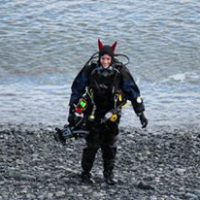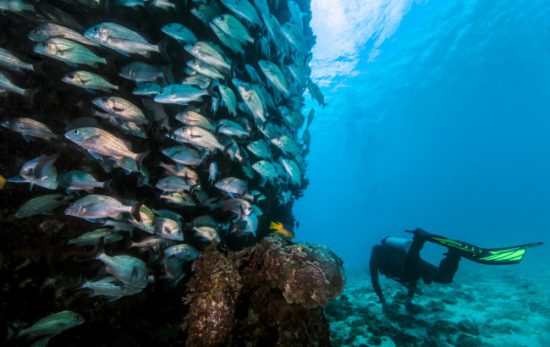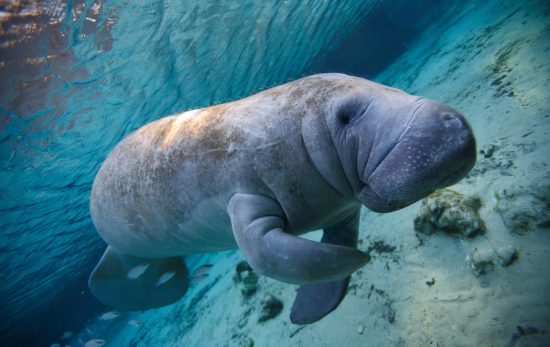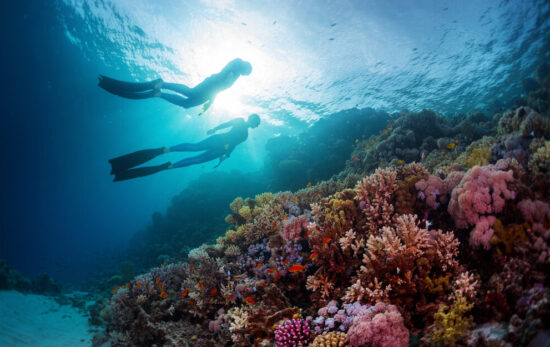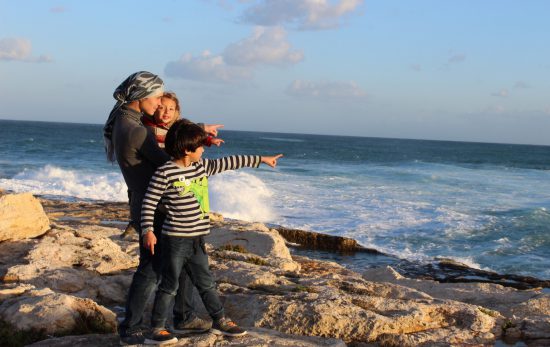The eternal search for the best dive ever is over. It’s called the sardine run.
Imagine watching a pod of common dolphins come up from the depths to force a shoal of sardines to the surface. In an attempt to look bigger, the tiny silver fish school together in a last-ditch effort for survival. The fish caught on the outside of the bait ball look like race cars speeding around a track before swarming sharks pierce through the middle, emerging on the other side with a mouth full of sardines. This sight alone would make any diver celebrate, but this dive has even more. It hits the mother lode.
Keep reading to find out why the sardine run in South Africa regularly tops the list of the world’s most epic dive trips – as well as some sardine run facts and a few tips to help you prepare for this adventure of a lifetime.
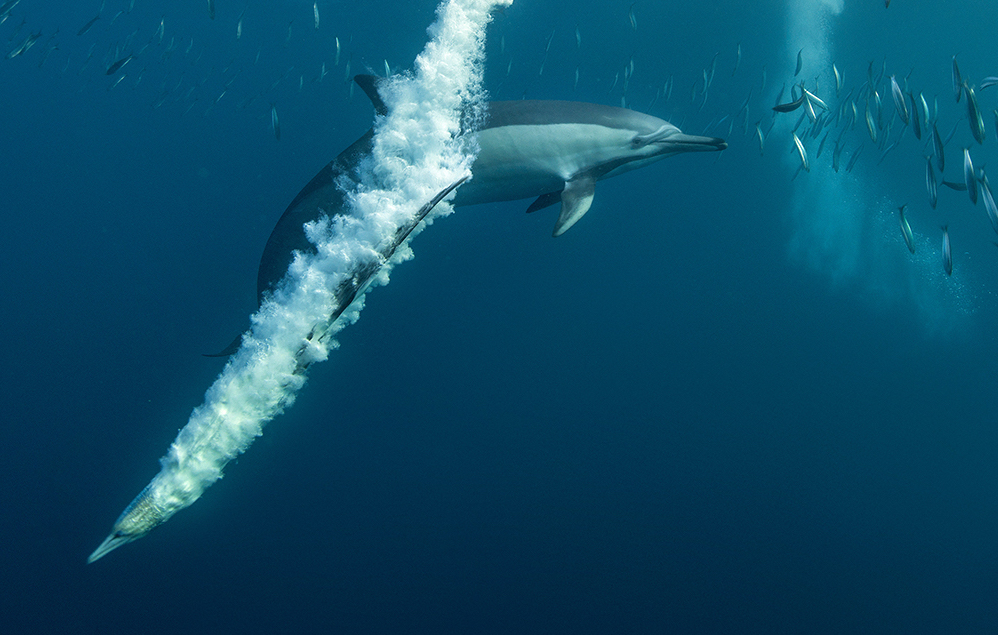
Sardine Run Diving: The Facts
- What is the sardine run? A phenomenon where millions of sardines migrate north in giant shoals, attracting predators.
- When is the sardine run? Once a year, May-July.
- Where is the sardine run in South Africa? Off the coasts of Eastern Cape and KwaZulu-Natal.
- Why does the sardine run happen? Reproduction or changes in ocean temperatures might cause this incredible sardine migration.
What Are Sardines?
Sometimes called pilchards, sardines are herring fish in the family Clupeidae. The sardine run’s headline star is the South African sardine (Sardinops sagax), a small silver fish around 25cm (10 inches) long. After spawning off Africa’s southernmost tip (Agulhas Bank), the sardines follow cooler currents upwards along the eastern coast. The result is a mass movement so impressive it rivals the great wildebeest migration.
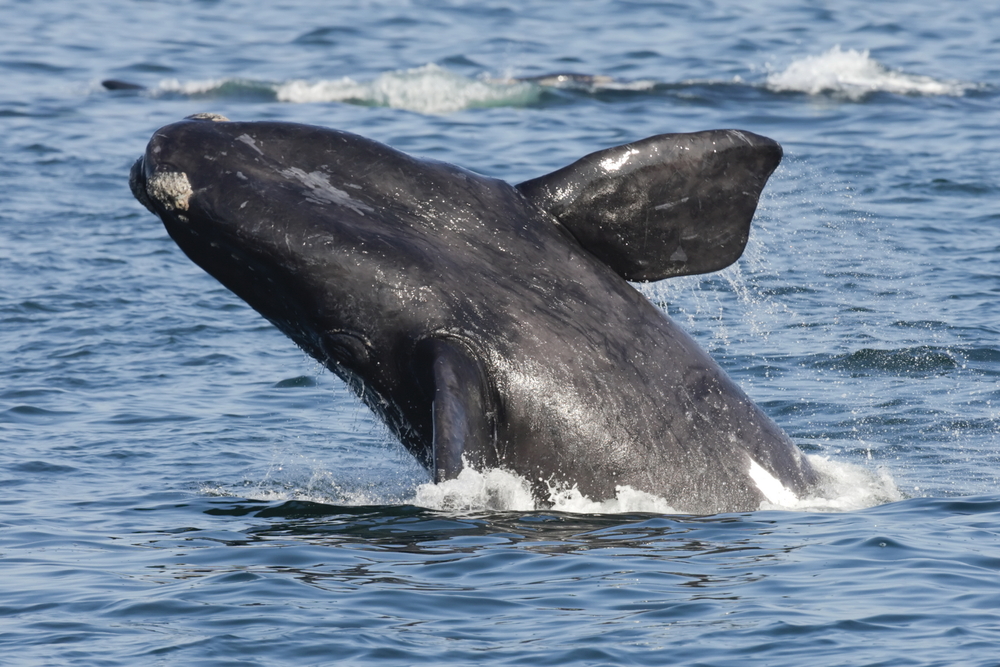
What Are the Predators of the Sardine Run?
These massive shoals of African sardines might reach up to 15km (9 miles) long, 4km (2.5 miles) wide, and 40m (130ft) deep. It’s a migration so big you can even see the sardine run from space! When millions of sardines gather together in one place, predators take notice.
Pods of common dolphins take the lead, skilled at rounding up the sardine bait balls. Next enter the sharks: bronze whaler, dusky, grey nurse, blacktip, spinner, and Zambezi. Then large game fish, like mackerel and tuna, come into view, followed by Cape fur seals and birds, such as Cape gannets and penguins.
Finally, of course, don’t forget the whales. Humpback whales, minke whales, and Bryde’s whales can’t resist this magnificent feast of silvery snacks!
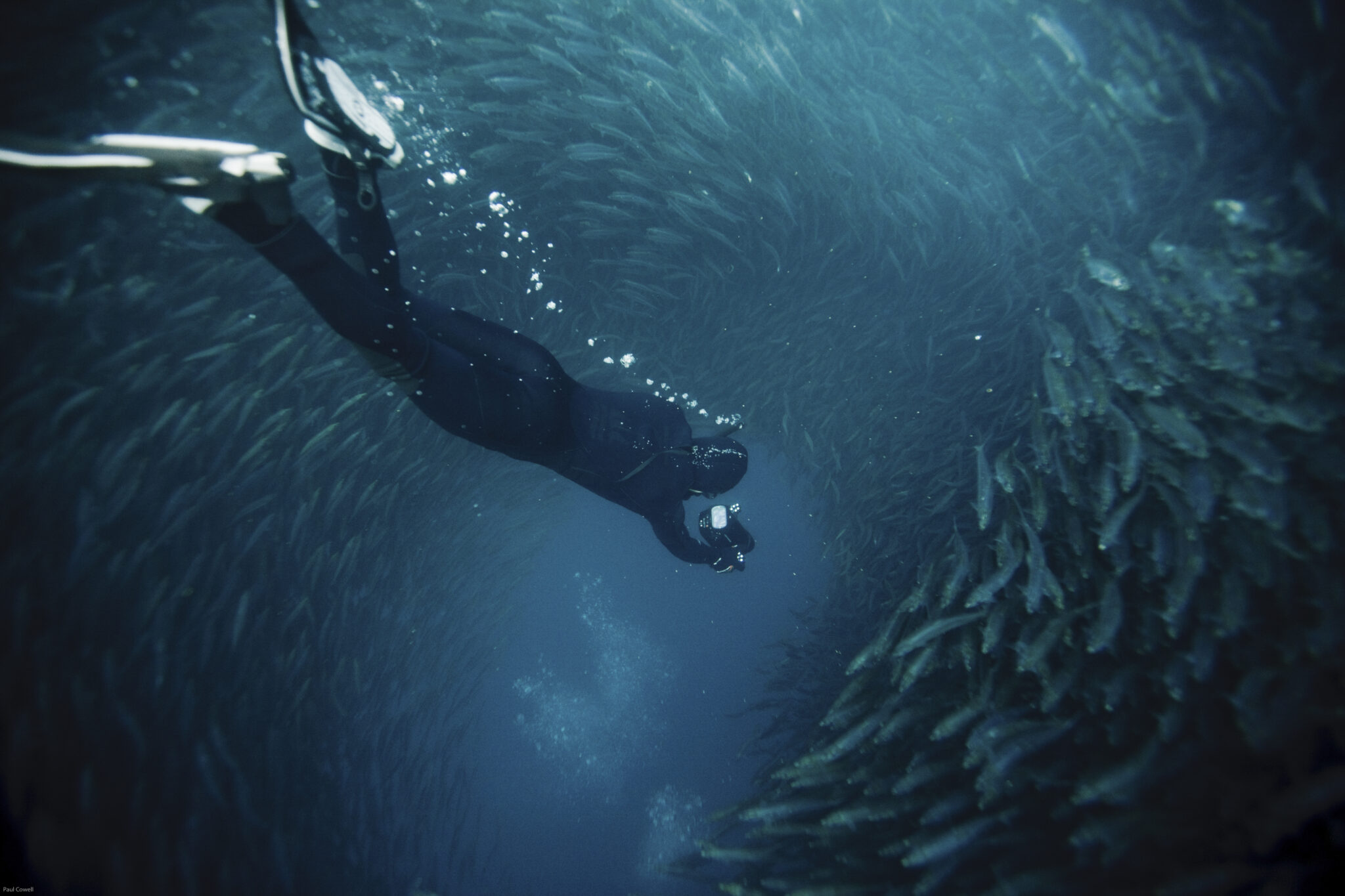
What You Need to Know
Sardine run diving is an energetic, adrenaline-pumping experience. But, with the excitement comes the need for careful consideration of the conditions and skills required.
It Can Be Chilly
It’s thought that colder water is favored for the annual sardine run migration to happen. This means temperatures are typically below 21°C (70°F), so you’ll need a full wetsuit or dry suit, hood, and gloves to stay warm.
Competent Photographers Only
Visibility can be anywhere between 5-30m (15-100ft), so photo opportunities at this underwater show are rife. Indeed, Lesley Rochat (aka the Shark Warrior) captured an iconic image during one sardine run that later became immortalized as one of PADI’s 2018 Limited Edition certification cards. However, underwater photographers will need to build up enough experience so that holding and operating the camera is second nature.
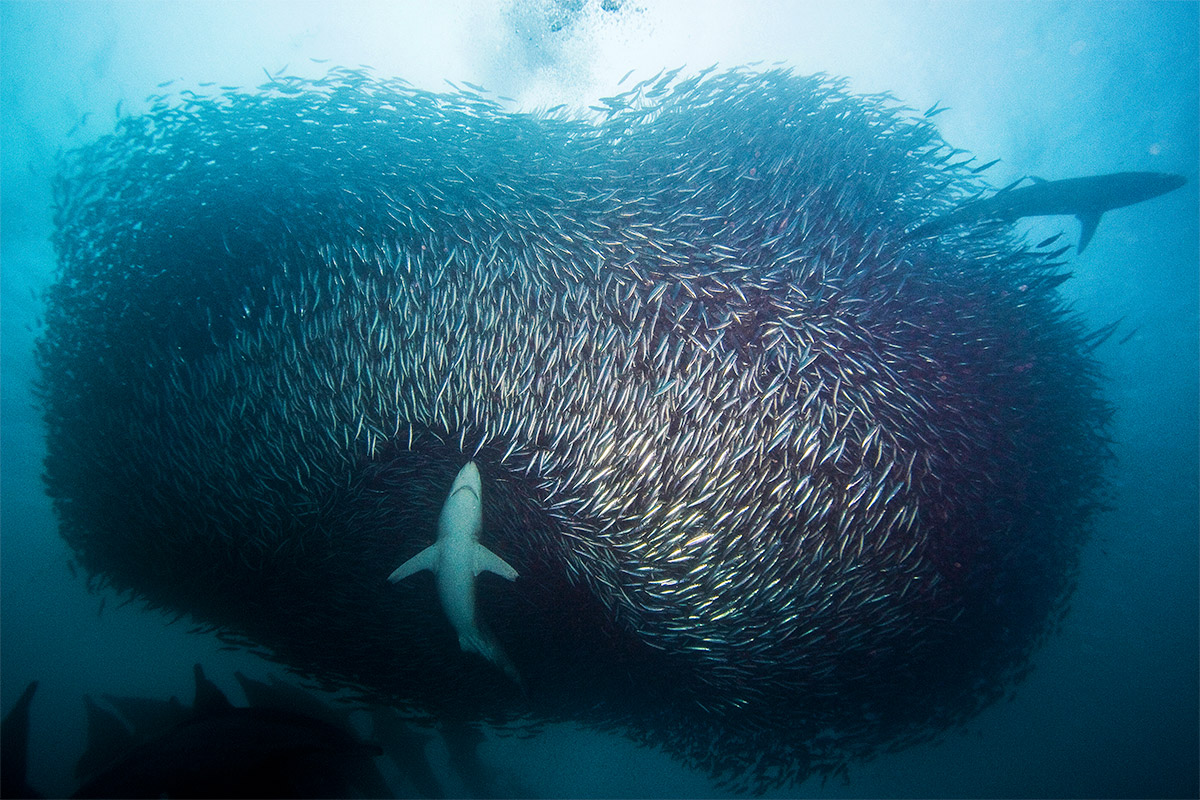
The Diving Can Be Challenging
As the South African coastline attracts strong currents, previous drift diving experience is essential. In addition, some operators in the area will access the dive site using inflatable boats. These launches start from the beach, deliver a wild ride through the surf, and usually require backward roll entries and negative entry techniques. The sardine run is not the time or place to be fine-tuning your equipment or practicing buoyancy skills.
What Certifications Do You Need?
Because of the fast-paced action and techniques required for sardine run scuba diving, these trips best suit experienced divers. Many operators ask for a minimum certification of PADI Advanced Open Water Diver with 50+ logged scuba dives, although some also run specialist trips for snorkelers or freedivers. Make sure you check with your preferred PADI Dive Center or Resort before traveling.
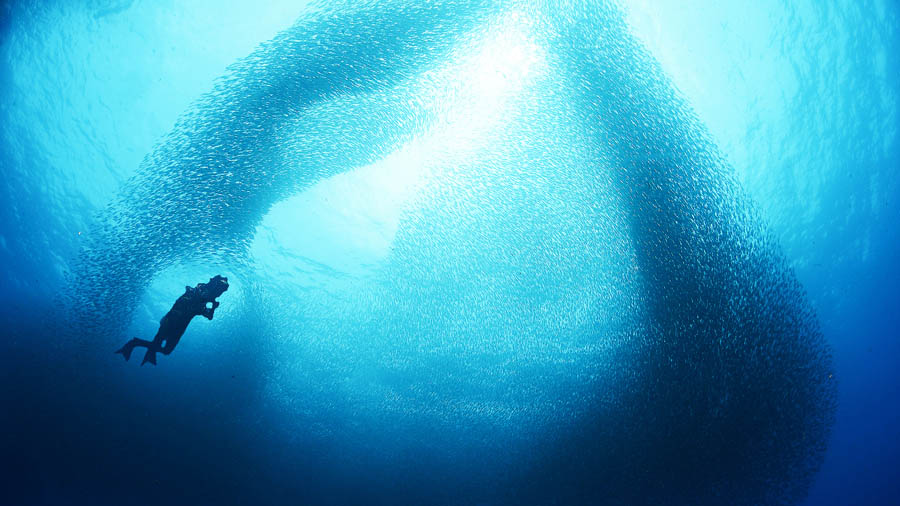
When and Where is the Sardine Run?
You know by now that this spectacular event only happens at a very specific time of year and in a few specific places. Here are the answers to the must-know questions about the famous sardine run.
Where Does the Sardine Run Start and Finish?
Generally speaking, the sardines start off at South Africa’s Agulhas Bank and continue as far north as Mozambique‘s coastline before turning east into the Indian Ocean. However, for the best action, you’ll want to catch the show somewhere in the middle, when sardine numbers – and pursuing predators – are at their peak.
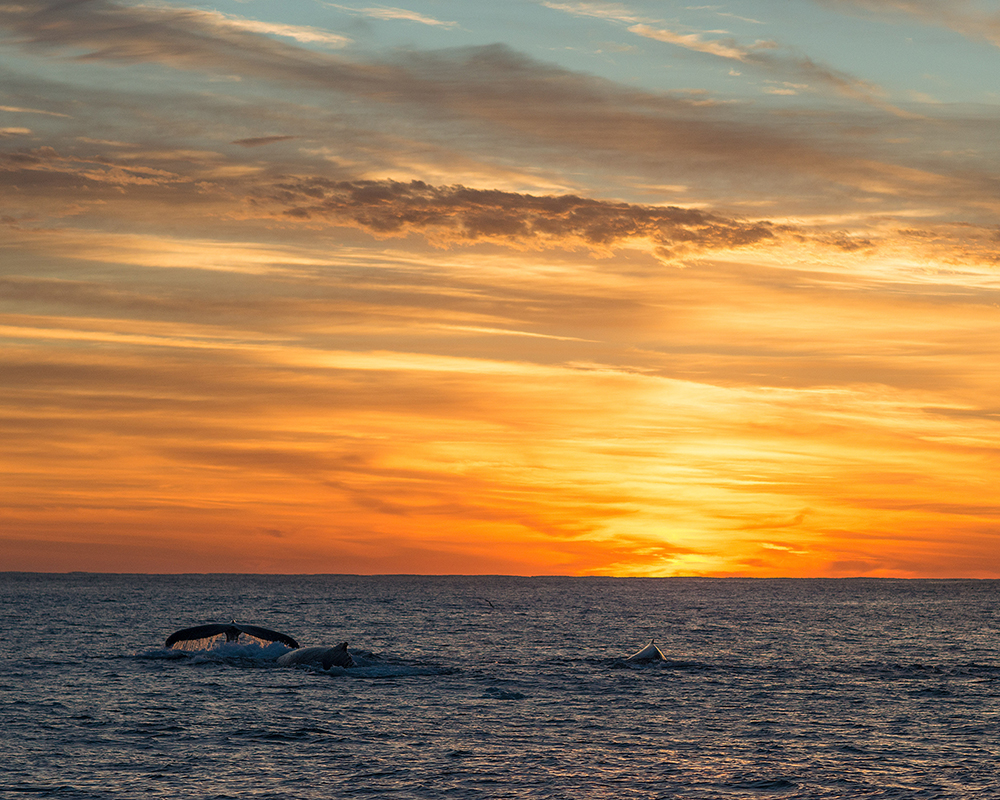
Where is the Best Place to See Sardine Run Action?
In the early migration phase (May-June), the best chances of witnessing this spectacle are around Gqeberha (formerly Port Elizabeth) and East London. Later, between June and July, you’ll want to head further north – try Port St. Johns and Mboyti.
What Time of Year is the Sardine Run Guaranteed for Divers?
Exact sardine run dates can vary from year to year. However, local dive shops and sardine run tour operators work closely with fishing boats and pilots to get updates and track the action. Of course, nature doesn’t follow a schedule, so it’s impossible to guarantee where, when, or even if the event will happen in any given year (and, sometimes, bad weather can cancel a planned dive day).
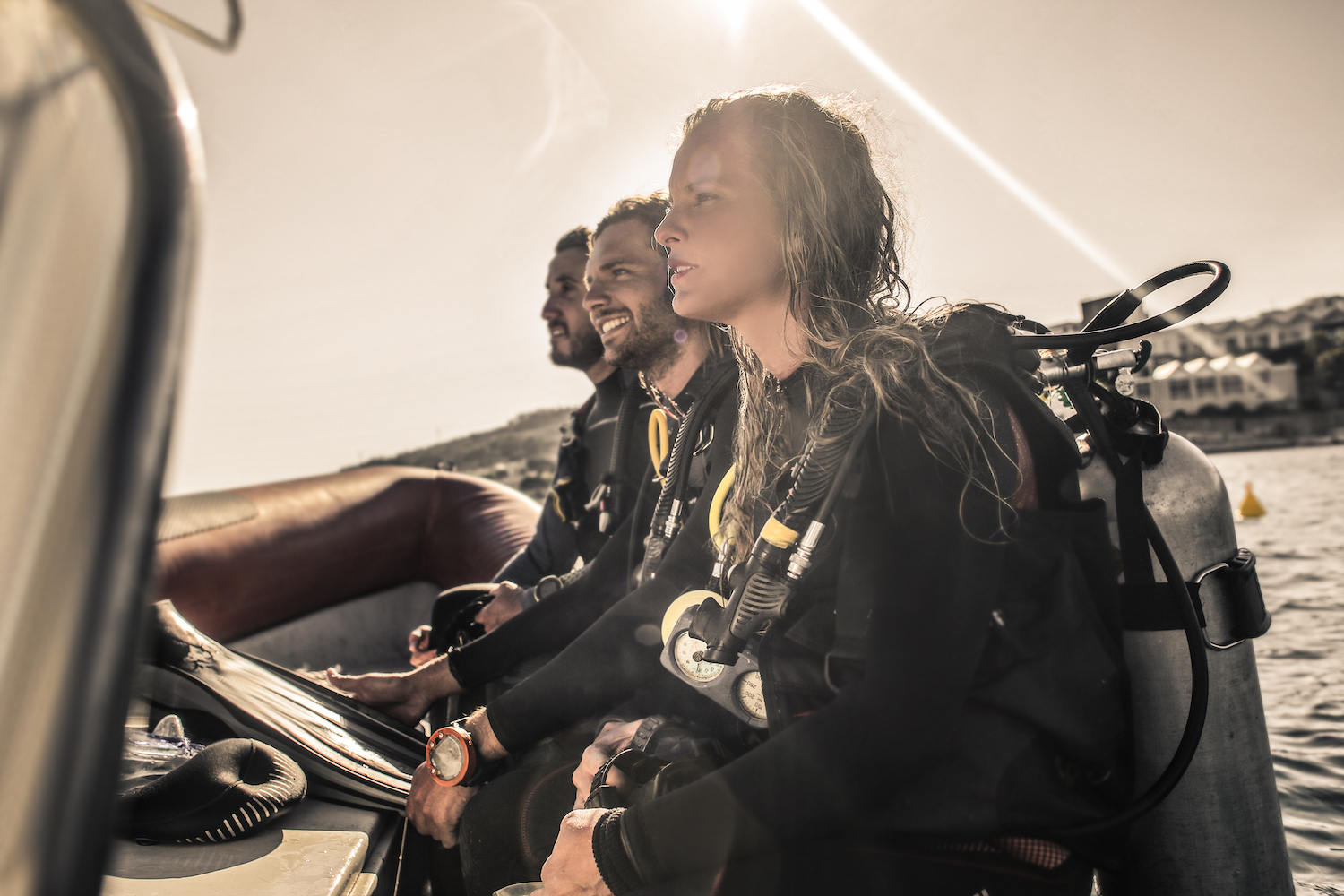
Get Ready for Sardine Run Diving
As well as getting your Advanced Open Water Diver certification, there are a few specific skills that will help prepare you for an epic sardine run trip, both in terms of your diving ability and confidence in the water. Here are five PADI Specialty courses to consider:
- Boat Diver. If you’re not familiar with boat diving, this course will ensure you know safe entry and exit techniques, as well as the proper etiquette and terminology.
- Peak Performance Buoyancy. This course will assist you to float perfectly at a specified depth in the water column with no visible bottom.
- Drift Diver. Currents can be strong along Africa’s Wild Coast, but this specialty will teach you the art of “flying” while communicating with your buddy and using drift diving safety equipment.
- Digital Underwater Photographer. Learn how to get the most from your camera so you’ll be ready to capture – and relive – your adventures with South Africa’s megafauna.
- Dry Suit Diver. Wearing a drysuit goes a long way to keeping warm while waiting for the action to start. This course will show you how to master dry suit skills above and below the water.
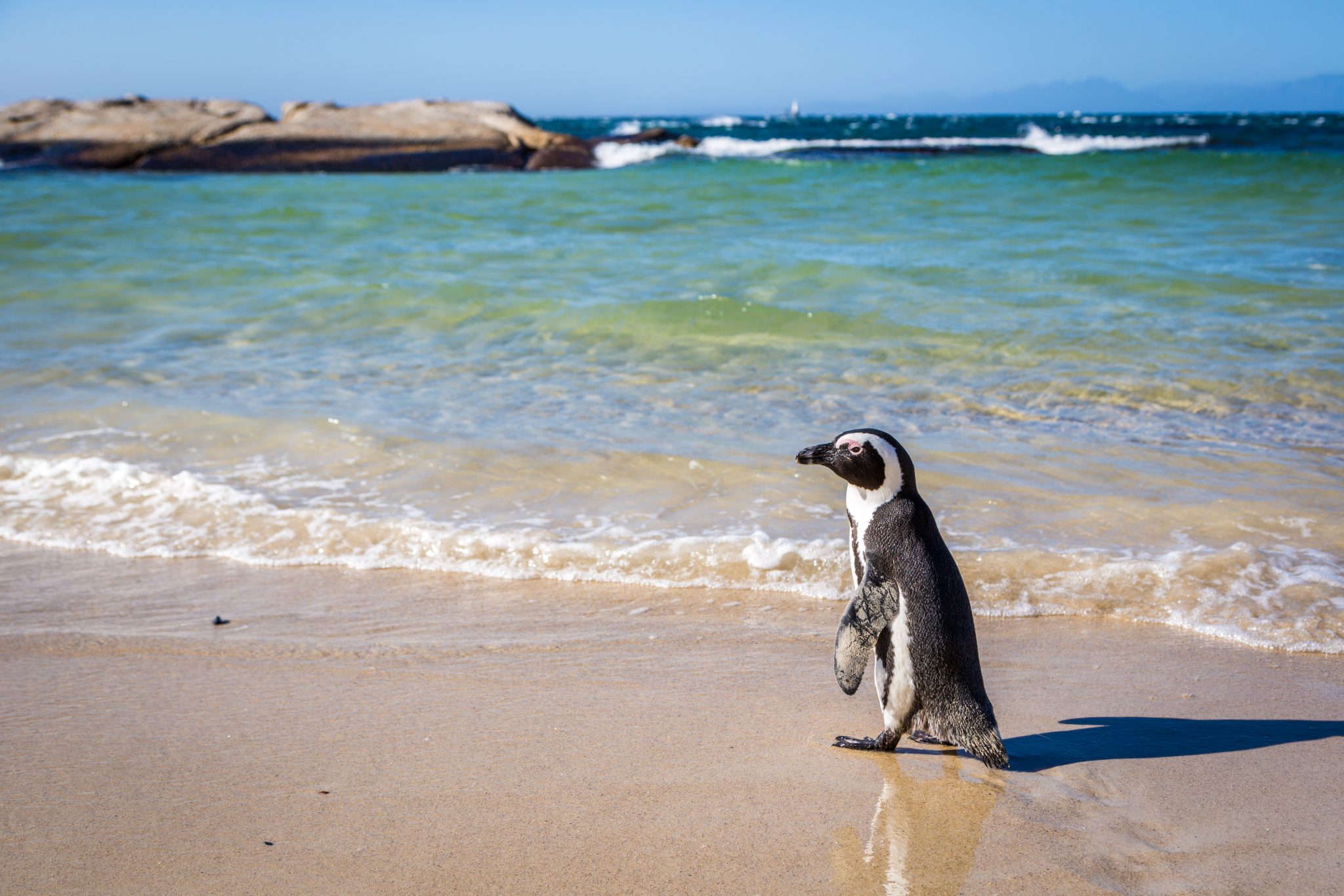
The Best Sardine Run Alternatives
As mentioned, the sardine run is never guaranteed. Don’t worry, though. Even without this event, heading to South Africa is anything but disappointing! Some other underwater adventures to explore include:
- Cape Point’s kelp forests, where you could encounter cape fur seals, stingrays, penguins, or even great white sharks.
- Whale watching at Sodwana Bay, where humpbacks and southern right whales migrate through at this time of the year.
- Getting close-up to tiger, bull, hammerhead, or occasional whale sharks in the thrilling waters around Durban.
In addition, there are plenty of topside activities in the area to keep you occupied, such as African Big Five safari tours and coastal walks.
How to See the Sardine Run
If you’re lucky enough to witness the bait balls, sharks, and whales during the sardine run, it could well be the most memorable dive of your life. Ready for Adventure Unfiltered? Visit PADI Travel® and book your next trip to South Africa!
